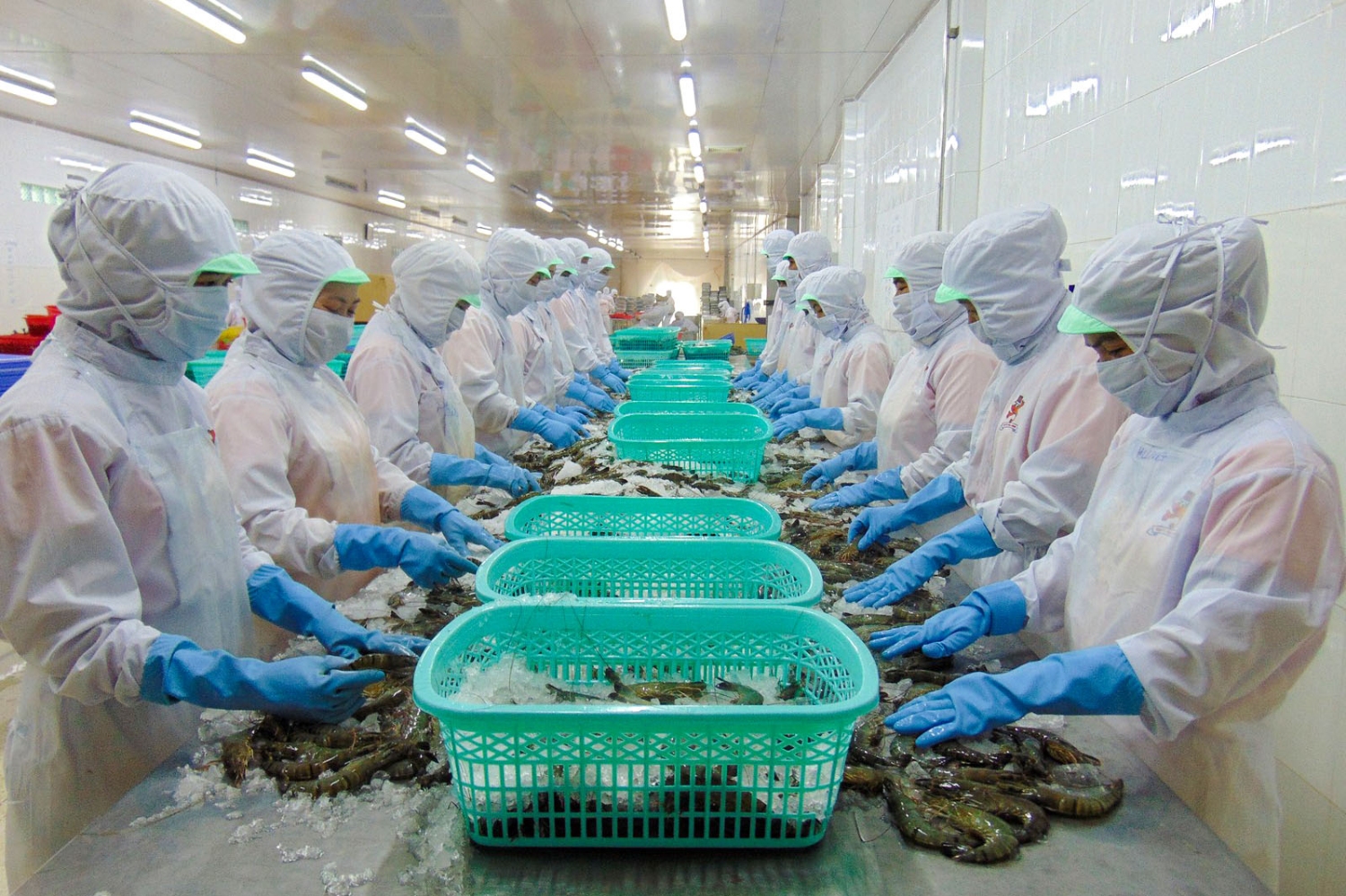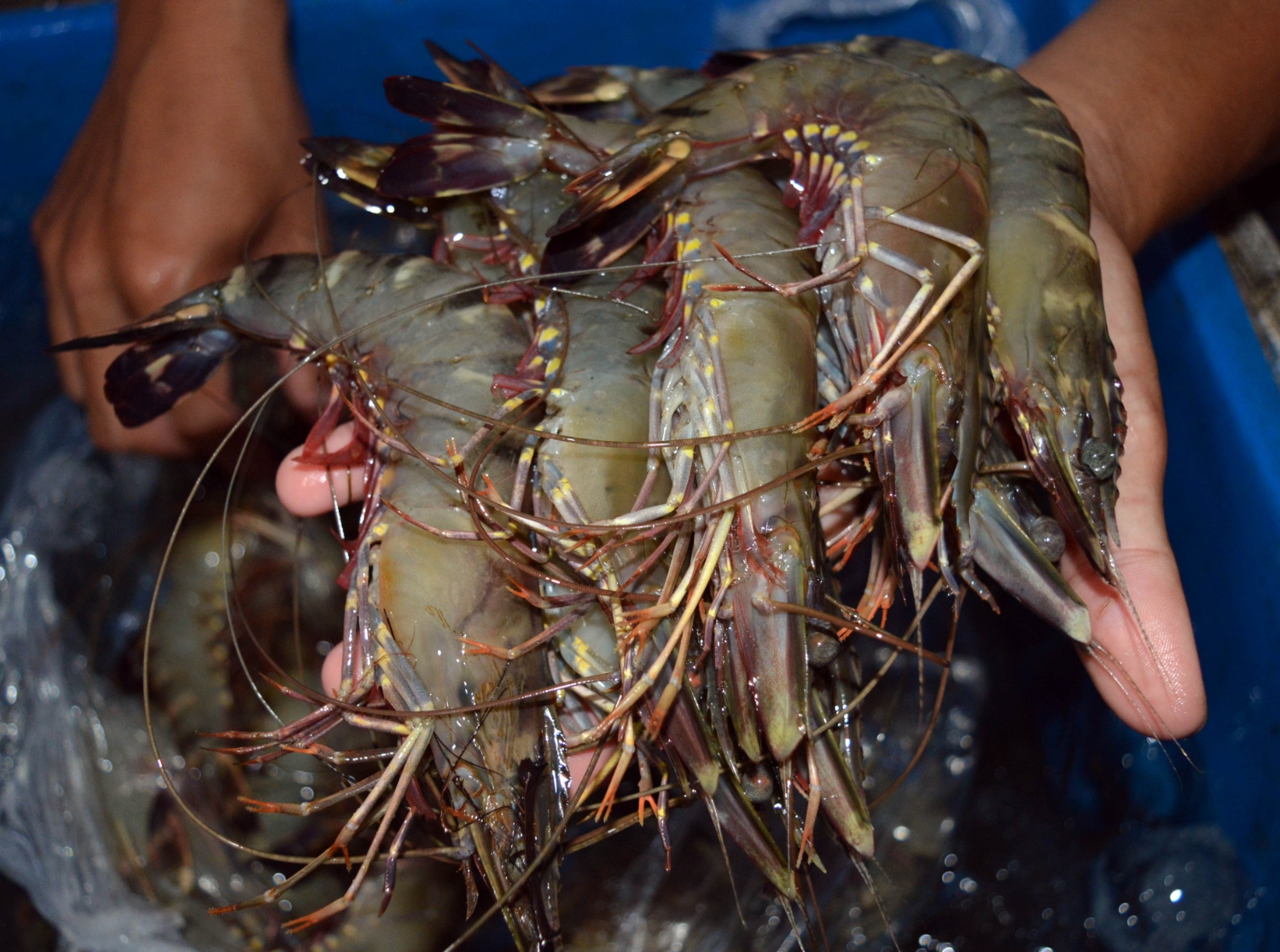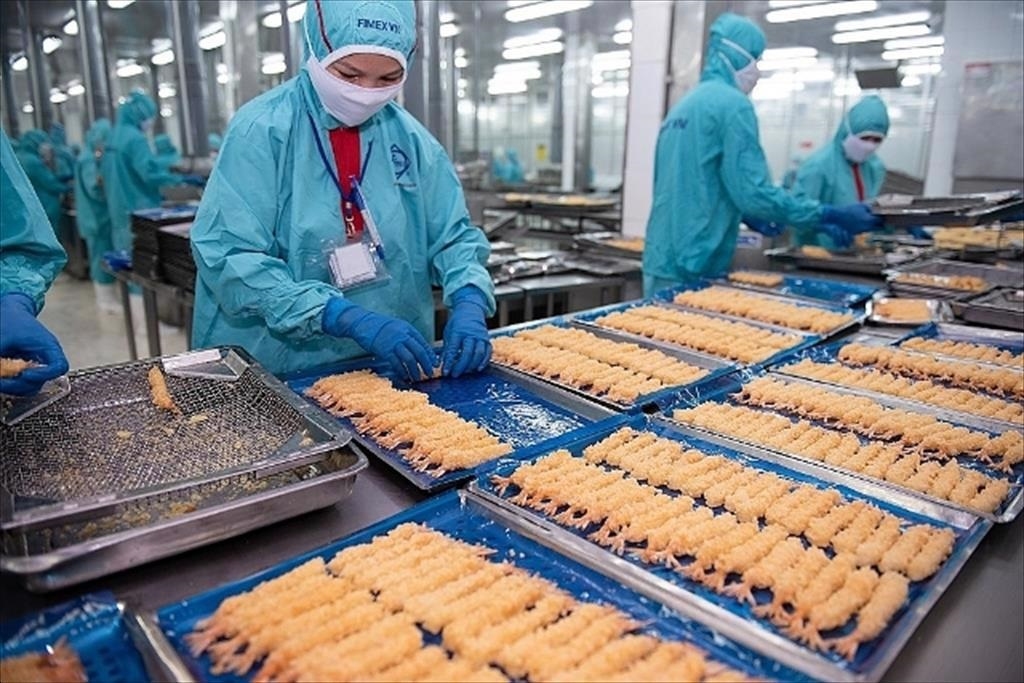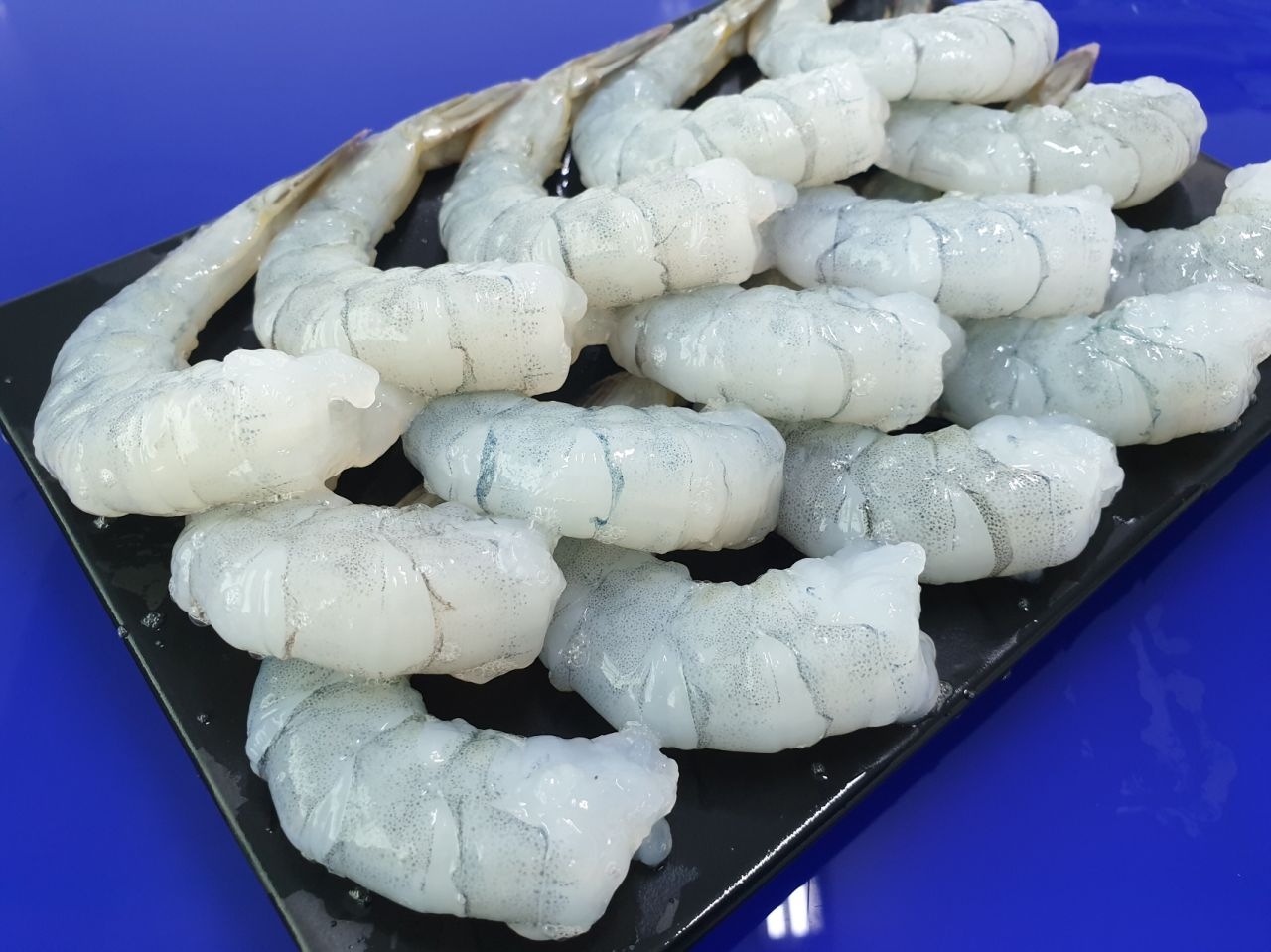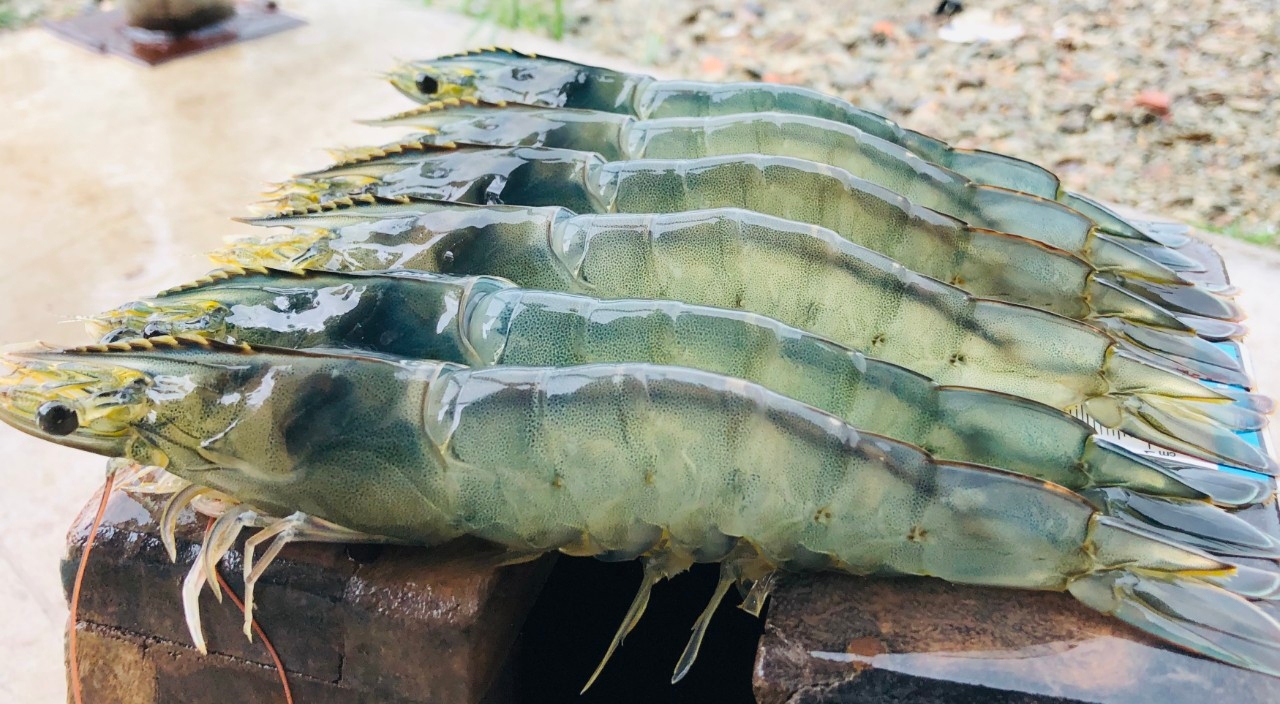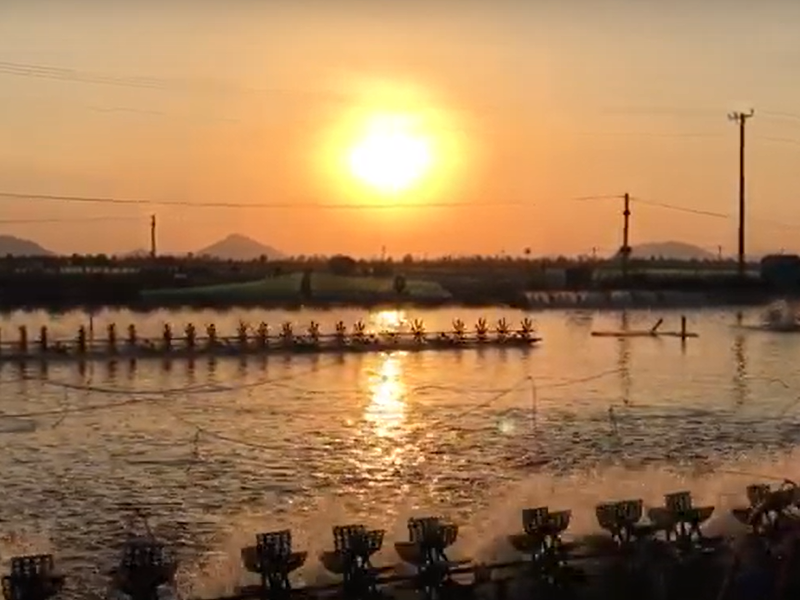
Raw shrimp prices fall: Another challenge the shrimp industry must overcome
(vasep.com.vn) Raw shrimp prices in the Mekong Delta provinces have tended to decrease sharply since May.

According to the shrimp price recorded on June 12 in Kien Giang province, the price of black tiger shrimp decreased by 30,000 - 40,000 VND/kg depending on size compared to 1 month ago. Specifically, traders bought 20 - 30 black tiger shrimp/kg for 250,000 VND/kg, down about 40,000 VND/kg. Black tiger shrimp 50 pieces/kg cost about 130,000 - 135,000 VND/kg a month ago, now down to 95,000 VND/kg.
Traders bought 100-count white-leg shrimp at 66,000-70,000 VND/kg, down about 20,000 VND/kg. 50-60-count white-leg shrimp at 73,000 VND, down 30,000 VND/kg. 70-80-count white-leg shrimp at 70,000 VND/kg, down 25,000 VND/kg.
Similarly, the price of white-leg shrimp in the provinces of Ca Mau, Bac Lieu, Soc Trang, Ben Tre, etc. is also low, down sharply compared to the beginning of the year.
According to some businesses and traders, the reason for the sharp drop in shrimp prices is that supply exceeds demand. In addition, shrimp is in season, the weather is favorable, so the harvest is large; at the same time, shrimp purchasing companies for export have reduced production. Shrimp export activities of businesses also face many difficulties due to slow market demand, supply chain congestion due to increased freight rates and lack of containers, and tension in the Red Sea.
Meanwhile, shrimp prices from India, Indonesia, and Ecuador are offering low prices. World market prices remain low and Ecuadorian shrimp continues to be sold at increasingly low prices.
Raw shrimp prices from world sources have all decreased.
Raw shrimp prices from major global suppliers have all fallen. Raw shrimp prices in China in week 25 (17-23/6/2024) fell to near decade lows as production reached its seasonal peak. 60 count/kg shrimp fell 22% and 80 count shrimp fell 25% compared to the previous week. Prices are now near decade lows last recorded in the summer of 2020 during the COVID-19 pandemic. Chinese shrimp production is expected to remain high in June and July.
Ecuadorian shrimp prices in week 24 (June 10-16, 2024) were around $3.90/kg for 20/30 and $3.50/kg for 30/40. Prices for 40/50, 50/60, 60/70, 70/80 and 80/100 shrimp remained unchanged at $3.30/kg, $3.15/kg, $2.80/kg, $2.30/kg and $1.90/kg.
Excess supply causes prices to drop sharply, which also affects farmers' profits and ability to maintain sustainable operations.
During week 25, in the major shrimp farming state of Andhra Pradesh, prices of 60 count HOSO shrimp were INR 260 (USD 3.12)/kg; INR 280/kg for 50 count; and INR 320/kg for 40 count.
Prices for the smallest shrimp -- 100 count/kg -- remain significantly lower than year-ago levels, down 17% from the same week in 2023. The situation is similar for the 60 count -- prices are down 10% from the same week last year.
The reason for the decrease in Indian shrimp prices is due to increased shrimp supply, processors are not paying higher prices because of the gloomy export market.
In Indonesia, raw shrimp prices continued to decline across all sizes in week 25. Prices have now fallen 10% for 30 count shrimp and 8% for 60 count shrimp in five weeks.
Raw shrimp prices in Indonesia have fallen as processors try to push prices down after the US imposed new anti-dumping duties.
Shrimp prices in the coming time are unclear, because besides the market demand factor, it also depends on the main crop of shrimp powerhouses such as Ecuador, India, and Vietnam. Ecuador is even more difficult to predict because they can raise shrimp all year round.
According to some enterprises, it is still uncertain whether shrimp prices will increase again, but the possibility of shrimp prices decreasing further is very unlikely, because recently some enterprises have increased their purchasing prices, although not many, but it shows that enterprises still have demand to buy raw shrimp. Raw shrimp prices are likely to increase again at the latest in August when the main harvest season in the world's supply sources has passed, and demand from markets is more positive in preparation for the end of the year.
Authorities have recommended that farmers stabilize their mentality, avoid massive harvesting of farmed shrimp, maintain stable stocking with lower density, extend the farming period to increase the size of large harvested shrimp, ensure quality, food safety, increase selling price, thereby increasing investment efficiency. Or it is possible to increase the farming density to increase the harvest yield, gradually harvest, the remaining quantity in the pond will have a favorable environment to grow faster. Proactively coordinate with relevant agencies and units to grasp the situation of raw shrimp price developments, analyze the production efficiency of each harvested shrimp size, and forecast the demand developments of the consumer market.
In the long term, to reduce production costs and create new momentum for shrimp, helping shrimp farmers ensure profitable production, promoting production linkage models according to the value chain must be paid more attention. Along with that, there must be a strategy in developing the feed processing industry, materials for shrimp farming, aiming for self-sufficiency. At the same time, constantly improve the farming process, strictly control the quality of seeds, materials and especially manage the environment well to aim at forming and building modern, sustainable shrimp farming models, low production costs and bringing high profits to shrimp farmers.
In the first 5 months of this year, Vietnamese enterprises exported shrimp to 103 markets, bringing in 1.3 billion USD, up 7% over the same period last year. Although the shrimp industry continues to face many challenges as the world economy has not shown signs of recovery and inflation remains high, the shrimp export turnover in the first 5 months of the year recorded a slight increase compared to the same period last year, which is a positive signal, especially as demand from the EU, Japan, and South Korea markets has shown signs of increasing again.
Source: VASEP
Other news
- Early stocking to get good price 21/12/2024
- Shrimp prices rise again in Vietnam, and reach 12-month high in India 28/08/2024
- Vietnamese Shrimp Industry Faces Many Challenges: Farmers Prefer Quality but Cheap Shrimp Seeds 01/08/2024
- Storms in the shrimp industry may last in 2024 07/05/2024
- Vietnam's Seafood Exports Reach $2 Billion In Q1 03/04/2024
- King of shrimp industry profits in 2023 02/04/2024
- A difficult story for shrimp 11/03/2024
- Shrimp exports face a difficult problem 23/02/2023
- Vietnam’s shrimp exports reached 141 million USD in the first month of 2023 22/02/2023
- SEABINAGROUP CONTRIBUTES TO LOCAL COMMUNITY 13/01/2023

